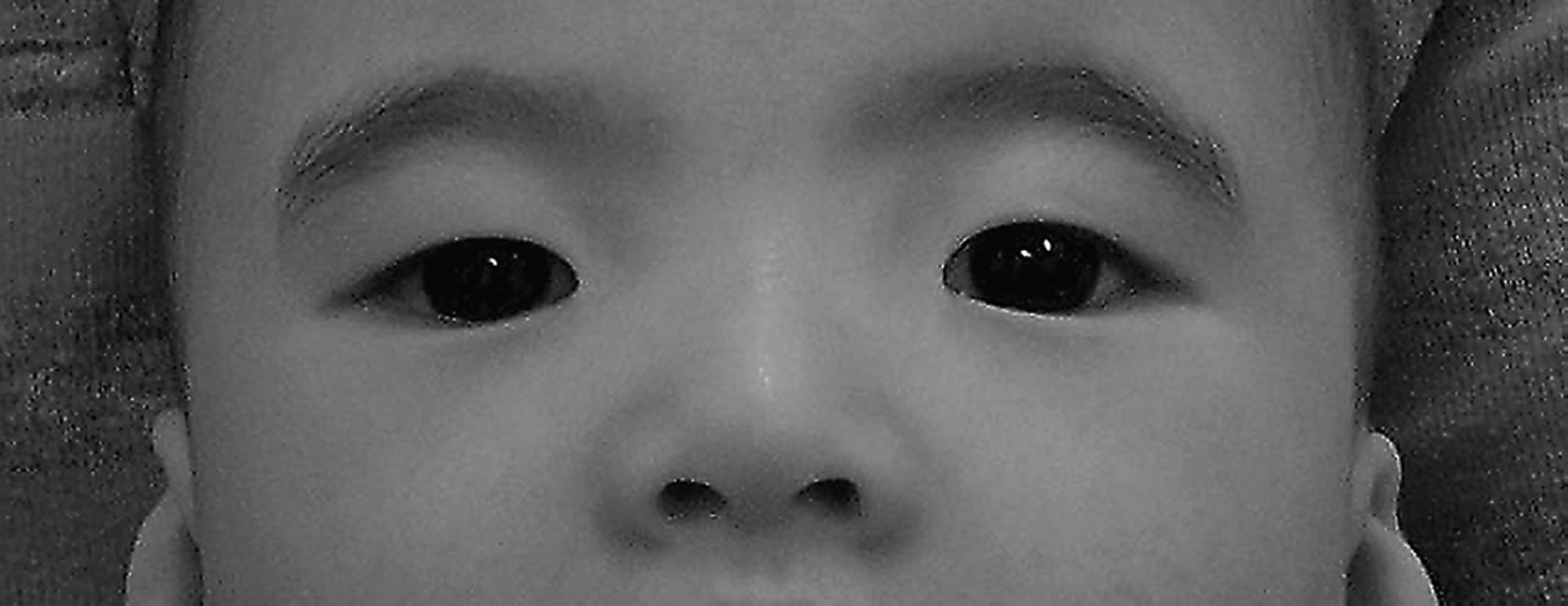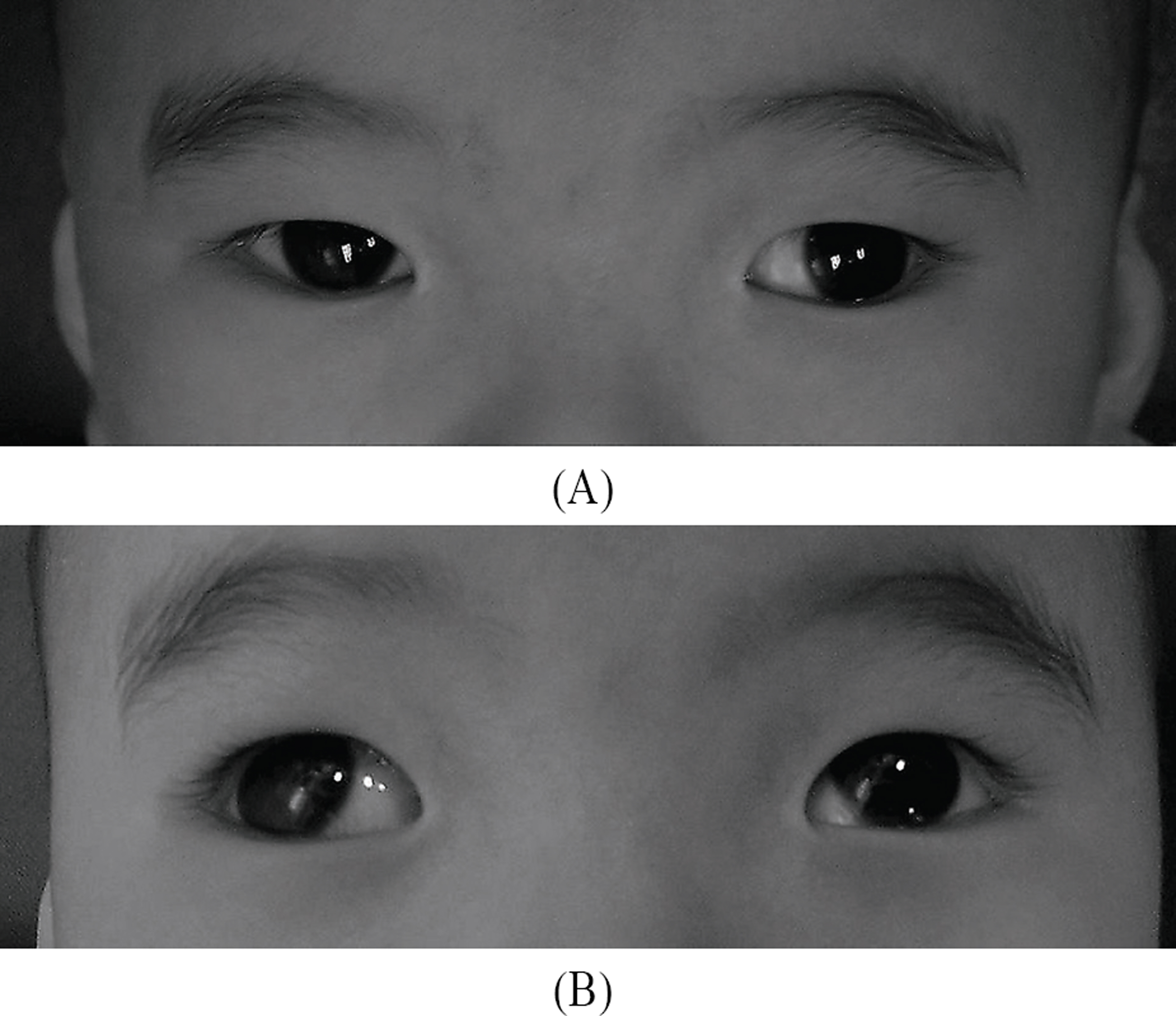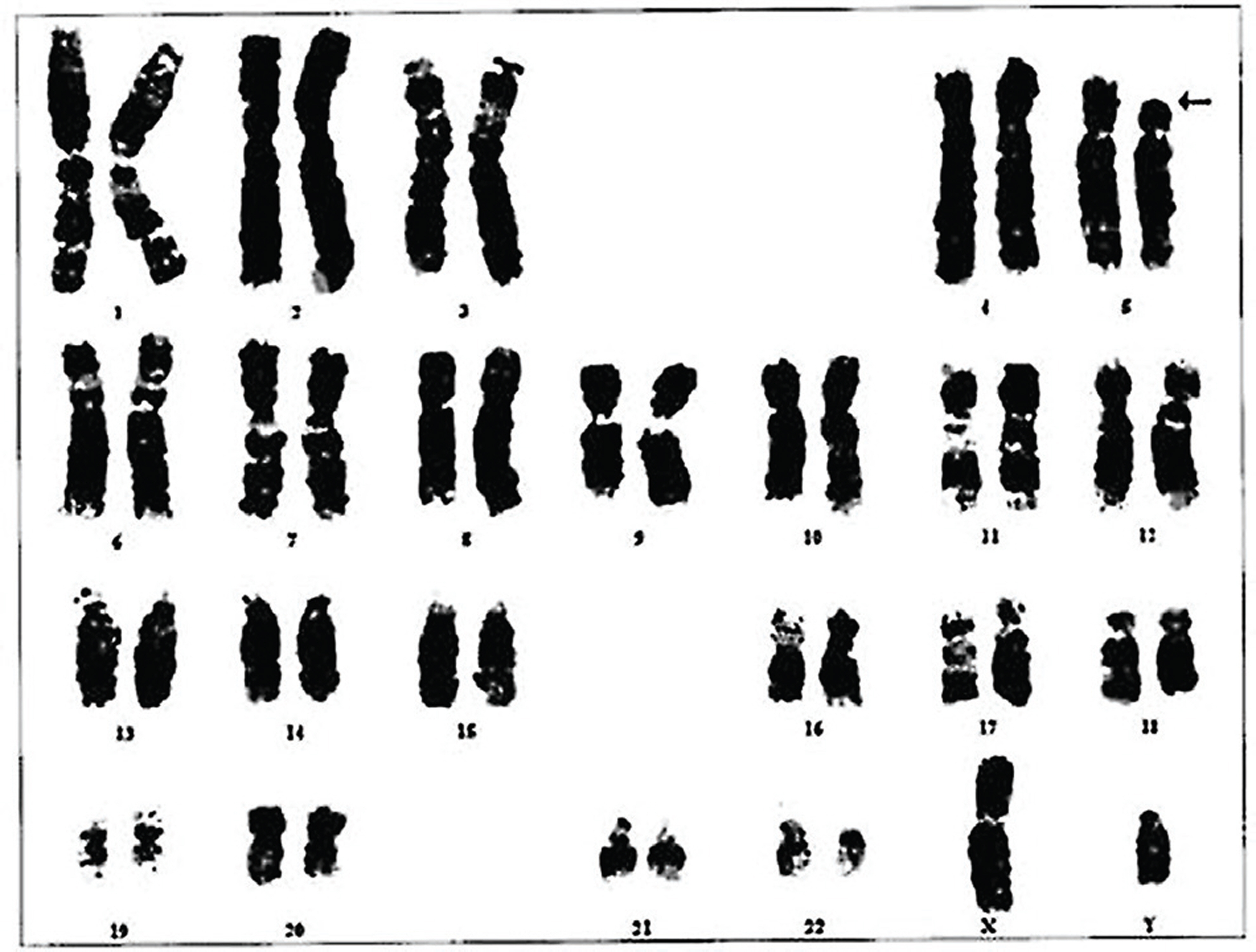J Korean Ophthalmol Soc.
2008 Nov;49(11):1867-1870.
Ocular Findings in Cri Du Chat Syndrome: A Case Report
- Affiliations
-
- 1Department of Ophthalmology, College of Medicine, Korea University, Seoul, Korea. ansaneye@hanmail.net
Abstract
- PURPOSE
To report the ophthalmologic examination of an infant who has cri du chat syndome with exotropia and facial abnormalities.
CASE SUMMARY
A 7 - month - old infant was confirmed as having cri du chat syndrome by a chromosomal study. He showed mild developmental retardation and eyeball deviation. This male infant underwent ophthalmic evaluations, including an extraocular examination, measurement of deviation, ocular movement test, interepicanthal distance, and fundus examination. As a result, facial abnormalities were found, including telecanthus and epicanthal folds. The infant had intermittent exotropia of 40 prism diopters according to the Hirschberg test and optic atrophy according to the fundus examination.
CONCLUSIONS
Cri du chat syndrome manifests with many different ocular symptoms, including hypertelorism, telecanthus, epicanthal folds, and exotropia.
MeSH Terms
Figure
Reference
-
References
1. Howard RO. Ocular abnormalities in the cri du chat syndrome. Am J Ophthalmol. 1972; 73:949–54.
Article2. Lee JH, Lee MS. A case of `Cri du Chat` Syndrome. J Korean Pediatrics Soc. 1981; 24:181–3.3. Choi HS, Lee SS, Lee C, et al. Two case of Cri Du Chat (5p-) Syndrome. J Korean Pediatrics Soc. 1981; 24:597–601.4. Jones KL. Smith's recognisable patterns of human malformation, 4th ed. Philadelphia: WB Saunders;1984; 40–1.5. Lejeune J, LaFourcade J, De Grouchy J, et al. Deletion partielle du bras court du chromosome 5. Individualisation d’un nouvel etarmorbide. Sem Hop. 1964; 40:1069–79.6. Labrune M, Lefebvre J, LaFourcade J, Lejeune J. Study of the radiological signs of crying cat syndrome. Ann Radiol. 1967; 10:303–10.7. Cho YA, Kim SH, Kim JH. Influence of orbit size and interorbital distance on development and outcome of surgery for intermittent exotropia. J Korean Ophthalmol Soc. 2003; 44:1356–62.8. Farkas LG, Ross RB, Posnick JC, Indech GD. Orbital measurements in 63 hyperteloric patients, Differences between the anthropometric and cephalometric findings. J Craniomax illofac Surg. 1989; 17:249–54.9. Rubin SE, Nelson LB, Wagner RS, et al. Infantile exotropia in healthy children. Ophthalmic Surg. 1988; 19:792–4.
Article10. Biglan Avis JS, Cheng KP. Infantile exotropia. J Pediatr Ophthalmol Strabismus. 1996; 33:79–84.
Article11. Punnett H, Carpenter G, DiGeorge A. Deletion of the short arm of chromosome 5. Lancet. 1964; 2:588.12. Bach C, Gautier M, Schaefer P, Moszer M. The crying cat syndrome. An anatomo-clinical case. Ann Pediatr. 1968; 15:339.13. Schechter RJ. Ocular findings in a newborn with cri du chat syndrome. Ann Ophthalmol. 1978; 10:339–44.
- Full Text Links
- Actions
-
Cited
- CITED
-
- Close
- Share
- Similar articles
-
- Cri-du-chat Syndrome with Dysphagia
- Brain Stem Hypoplasia Associated with Cri-du-Chat Syndrome
- Two Cases of Cri Du Chat(5p-) Syndrome
- A Case of Cri-du-chat Syndrome with Genitourinary Anomaly
- Lack of Myelination in the Anterior Limbs of the Internal Capsule Associated with Cri-du-Chat Syndrome: Case Report




